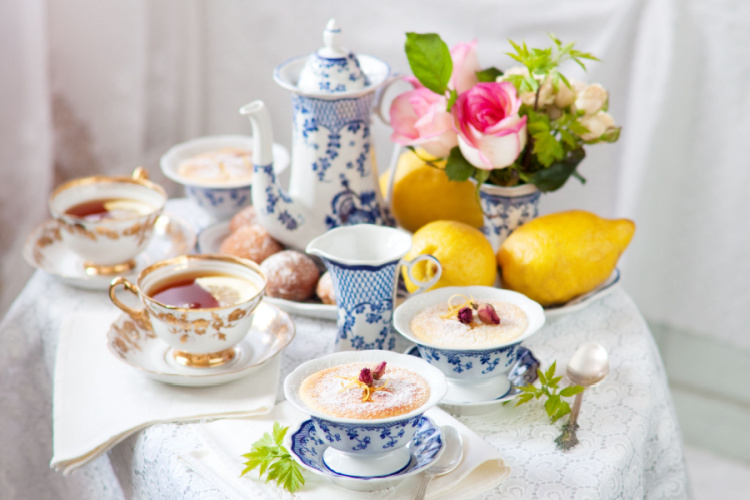Tea is loved by many people around the world. It has a rich history. It is more than just a drink. It is a way of life. In this article, we will learn about Tradition Tea. We will explore its history, types, preparation methods, and benefits.
The History of Tea
Tea has a long history. It started in China over 5,000 years ago. It was discovered by Emperor Shen Nong. He found it when tea leaves fell into his boiling water. He tasted it and liked it. Tea then spread to other countries. It reached Japan, India, and Europe. Today, tea is enjoyed by people everywhere.

Credit: perapalace.com
Different Types of Tea
There are many types of tea. Each type has its own taste and benefits. Here are some common types:
- Green Tea: Green tea is made from fresh leaves. It has a light flavor. It is rich in antioxidants.
- Black Tea: Black tea is made from fermented leaves. It has a strong flavor. It has more caffeine than other teas.
- Oolong Tea: Oolong tea is partly fermented. It has a taste between green tea and black tea.
- White Tea: White tea is made from young leaves. It has a delicate flavor. It is the least processed of all teas.
- Herbal Tea: Herbal tea is made from herbs, fruits, and flowers. It does not contain tea leaves. It has many different flavors.
How to Prepare Tea
Preparing tea is simple. But it requires care. Here are some steps to make a perfect cup of tea:
- Boil water. Use fresh water for the best taste.
- Warm the teapot. Pour a little hot water into the teapot. Swirl it around and then pour it out.
- Add tea leaves. Use one teaspoon of tea leaves per cup. Put the tea leaves into the teapot.
- Pour hot water over the tea leaves. Let the tea steep. The steeping time depends on the type of tea. Green tea needs 2-3 minutes. Black tea needs 3-5 minutes. Herbal tea needs 5-7 minutes.
- Strain the tea. Pour the tea through a strainer into a cup.
- Enjoy your tea. You can add milk, sugar, or lemon if you like.
| Type of Tea | Steeping Time |
|---|---|
| Green Tea | 2-3 minutes |
| Black Tea | 3-5 minutes |
| Oolong Tea | 3-4 minutes |
| White Tea | 4-5 minutes |
| Herbal Tea | 5-7 minutes |
The Health Benefits of Tea
Tea is not just delicious. It is also good for your health. Here are some benefits of drinking tea:
- Rich in Antioxidants: Tea has antioxidants. They help fight free radicals. Free radicals can damage cells.
- Boosts Heart Health: Tea can help lower blood pressure. It can also reduce the risk of heart disease.
- Improves Digestion: Herbal teas like peppermint and ginger can help with digestion.
- Helps with Weight Loss: Green tea can help with weight loss. It boosts metabolism.
- Reduces Stress: Drinking tea can help you relax. The act of making tea can be calming.
The Culture of Tea
Tea has a special place in many cultures. Each culture has its own way of making and drinking tea. Here are a few examples:
Chinese Tea Ceremony
The Chinese tea ceremony is called “Gongfu Cha.” It means “making tea with skill.” It is a ritual. It is a way to show respect to guests. It involves many steps. Each step is done with care.
Japanese Tea Ceremony
The Japanese tea ceremony is called “Chanoyu.” It means “hot water for tea.” It is a spiritual practice. It is about harmony, respect, purity, and tranquility. It involves preparing and drinking matcha. Matcha is a powdered green tea.
British Afternoon Tea
Afternoon tea is a British tradition. It started in the 19th century. It involves drinking tea with sandwiches, scones, and cakes. It is a social event. It is a time to relax and chat with friends.
Frequently Asked Questions
What Is Tradition Tea?
Tradition Tea is a unique tea brand.
How To Contact Tradition Tea?
Call them at (07) 5453 7087.
What Types Of Tea Does Tradition Tea Offer?
They offer a variety of traditional teas.
Where Is Tradition Tea Located?
Contact them at (07) 5453 7087 for the location.
Conclusion
Tradition Tea is more than just a drink. It has a rich history. It comes in many types. Each type has its own taste and benefits. Preparing tea is simple but requires care. Tea is also good for your health. It has a special place in many cultures. So, next time you drink tea, think about its journey. Enjoy every sip.
For more information, you can contact Tradition Tea at (07) 5453 7087.
